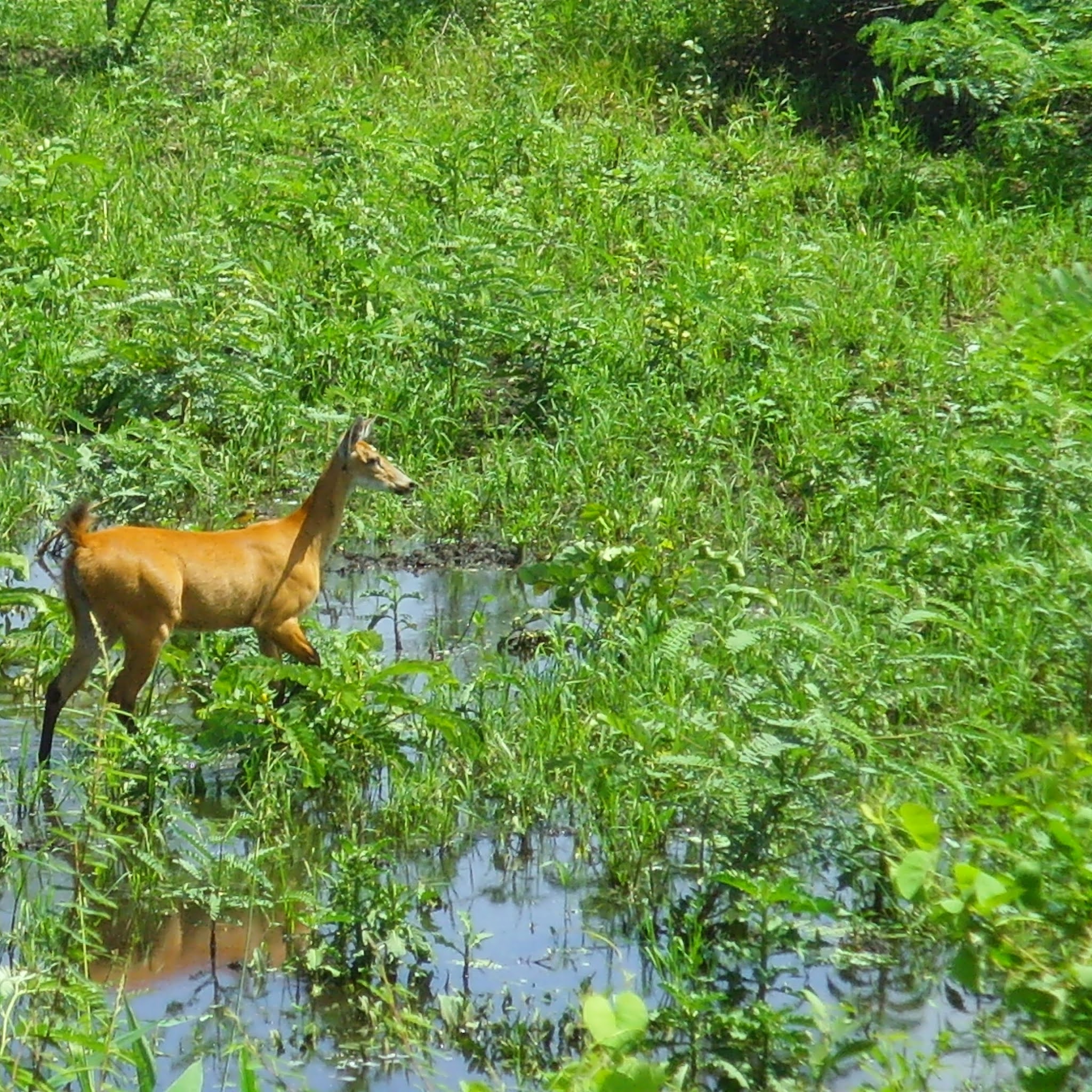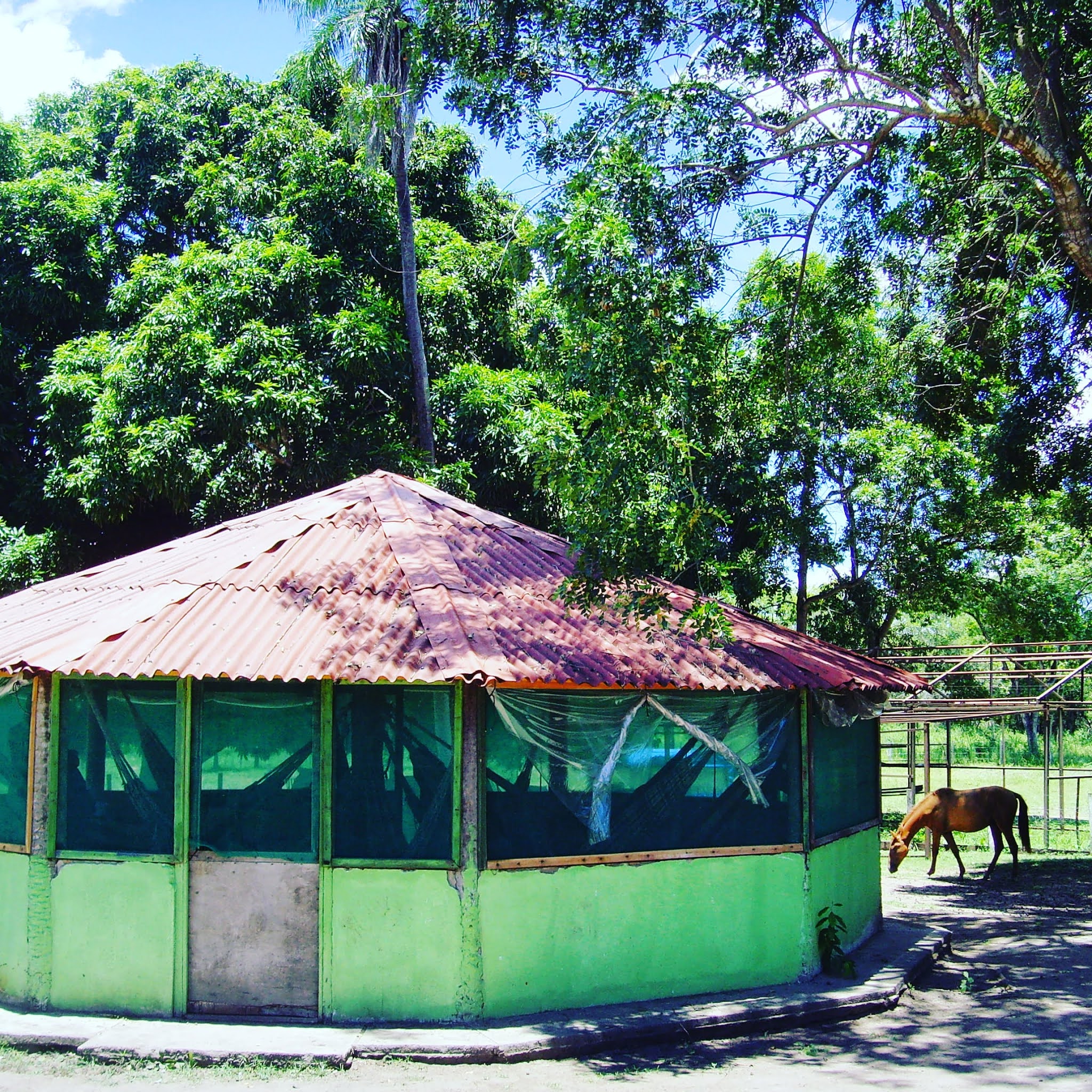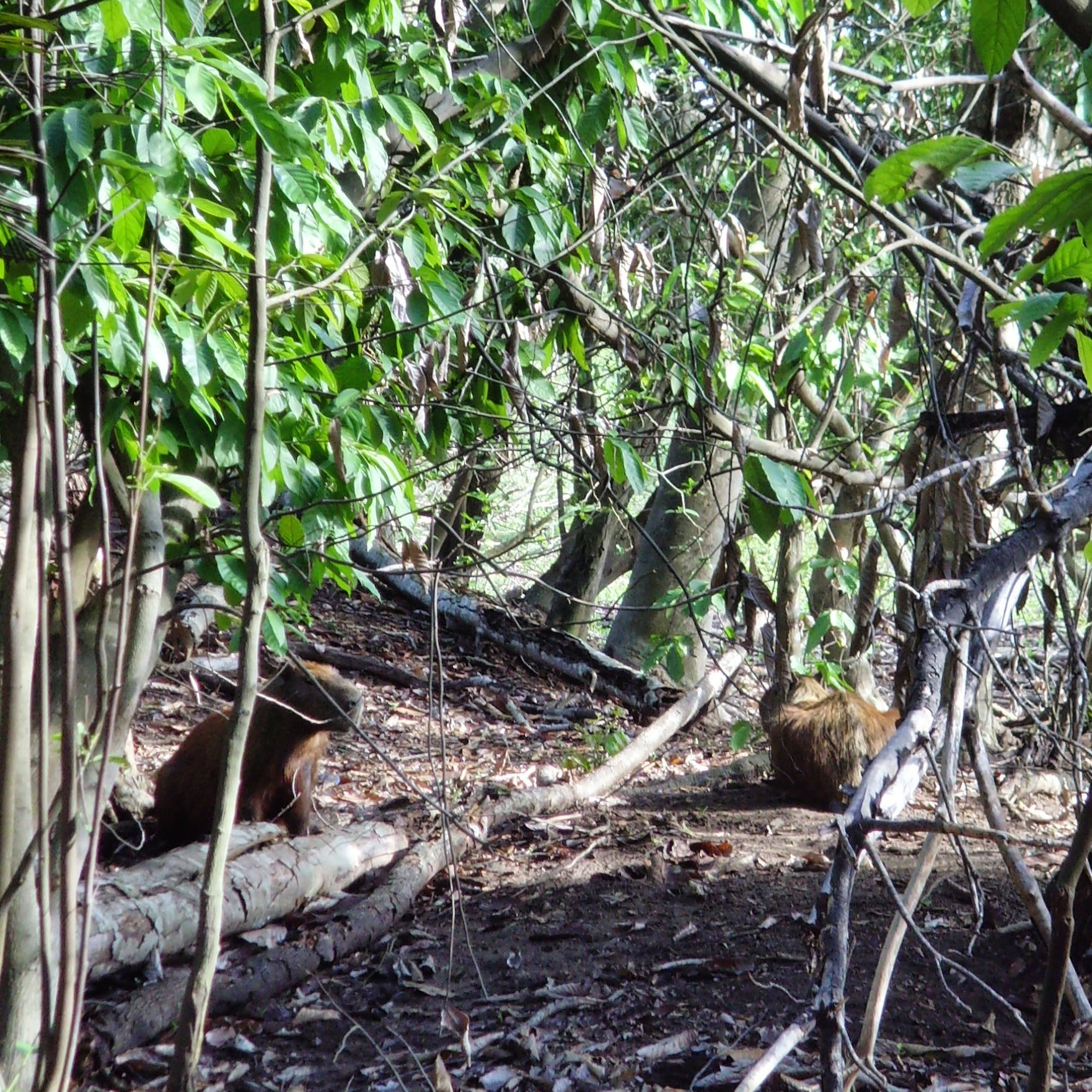Spanning over 150,000 square kilometres across parts of Brazil, Bolivia, and Paraguay, the Pantanal is a tropical wetland covered in floodplains, made up of Amazonian rainforest, savannas, and grassland. Due to its unique ecosystem, this area in South America is home to some incredible plants, rare animals and birds—like the fabulous hyacinth macaw—well as boasting the largest jaguar population on earth. Wanting to get back to nature about midway through my four months in South America, just after a guided walk through Rocinha favela in Rio, I took a night bus across the breadth of Brazil, all the way to Campo Grande, arriving 25 hours later, very tired but excited to get back to nature.
 |
| Wildlife spotting in the Pantanal |
How to get to the Pantanal in Brazil
Upon arrival in the city of Campo Grande (jumping off point for the Pantanal) I booked a four-day trip directly through my hostel and was picked up the very next morning, along with eight other travellers from Amsterdam, Belgium and the UK. The journey into the wetlands consisted of another bus (three hours) and a jeep along unsealed roads (one and a half hours) before we got dropped off at our very modest base, already covered in the biggest mosquito bites I’d ever seen. Sleeping arrangements were communal—a large hut with ten hammocks strung out from a central pillar. It was my first time sleeping in a hammock, and I soon realised it would be my last as hammocks might be fun for lazing on the beach but for sleeping they really aren’t all that comfortable, especially when you’re sharing the space with a huge tarantula, two snoring tour guides and mosquitos that can bite through jeans, but since I was only there for three nights so aimed to make the best of it.
 |
| My base for three nights |
The first day I woke to the sound of strange birdcalls surrounding our hut then got up and headed out to explore at 6.30am, stopping at two nearby lakes where huge numbers of caiman (a type of small crocodile) were already basking in the sun. Incredibly, the Pantanal is home to over 10 million caiman so you’re sure to spot them along with the shy capybara, an animal that kind of looks like a very large guinea pig but is actually the largest rodent in the world. These guys hang out mostly in the shade but there are so many throughout the Pantanal you’re guaranteed to see more than a handful. On my first day exploring I also saw so many amazing beautiful birds, from eagles and parrots, as well as a few bright white, elegant storks.
 |
| Capybara's in the jungle |
On day two we made our way to the Paraguay River and took a boat past women doing their washing in the water and young, tattooed boys fishing. Our guide Jonny taught us how to fish too, once back on the river's edge we caught piranhas and Jonny showed us their razor-sharp teeth, before we cooked the fish on a BBQ for lunch, along with a whole host of other South American food and drinks.
 |
| Piranhas for lunch |
Later we saw howler monkeys swinging through trees and spent the afternoon walking through long grass looking for snakes. After hours in the scorching sun, Jonny found a huge yellow and black anaconda that I could not believe I had seen in the wild, he picked it up to let the group have a closer look before letting it slide back into the grasslands. We also looked out for jaguars on small patches of land across the wetlands but unfortunately didn’t manage to catch a glimpse of one this time. On our last day before travelling back to the city, we all headed out on horseback, galloping through palm groves and passing real-life cowboys with their cows kicking up dust clouds as they passed.
The Pantanal is the real deal when it comes to seeing incredible wildlife up close, and you can easily do it cheaply if you're traveling the world on a budget—just be prepared to sleep in hammocks and brave a few mosquito bites. My three days came in way under $125 (£100), including food, water and transport. After the Pantanal, if you're heading south it makes sense to stop off at the awe-inspiring Iguazú Falls, an unmissable destination, and one of my favorite spots in the whole of South America.
Post a Comment